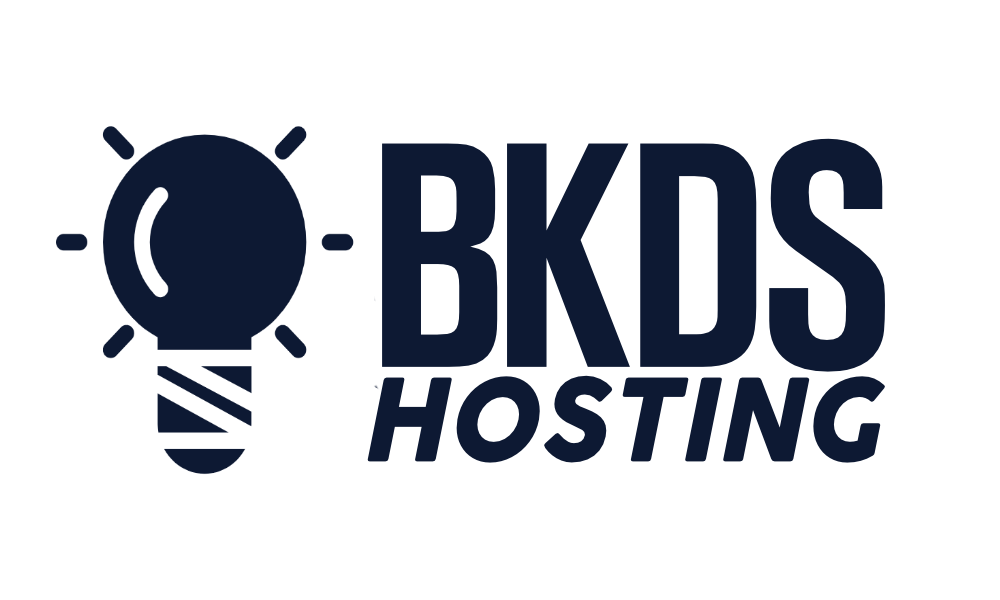In our digitally dominated business landscape, ensuring the continuous operation and accessibility of your small business website is paramount. A moment of downtime can not only mean loss of potential revenue but can also negatively impact your brand's credibility. As small businesses increasingly rely on their online platforms to attract and retain customers, understanding and implementing measures to prevent website downtime becomes a crucial task. In this discussion, we will explore the top ten strategies to safeguard your online presence from unexpected disruptions, facilitating smooth customer interactions and contributing to your business's overall success.
Understanding Website Downtime

What exactly constitutes website downtime, and why is it such a significant concern for small businesses? Website downtime refers to periods when a website is unavailable or unresponsive, typically due to issues with server maintenance or web hosting service. For small businesses, any period of website downtime can lead to substantial losses, both financially and in terms of brand credibility.
Research indicates that website downtime can cost small businesses anywhere from $137 to $427 per minute. Not only does downtime lead to lost sales, but it also negatively impacts website performance, affecting crawl rates and search rankings. This is particularly damaging during peak business hours when high traffic levels are expected.
Preventing website downtime requires a proactive, detail-oriented approach. Regular uptime monitoring can alert businesses to potential issues before they escalate, while choosing a reliable web hosting service can reduce the risk of server overload or shared hosting resource usage issues. Cyberattacks, poor quality hosting, and application or design problems are also common culprits. Small businesses must prioritize these areas to prevent website downtime and maintain optimal website performance.
Impact of Downtime on Small Businesses
The consequences of website downtime for small businesses are both immediate and far-reaching, with even a one-second delay in website loading potentially leading to a significant drop in sales. When a website is unavailable, customers may perceive it as an indication of unreliability, which can lead to a loss of credibility for your brand.
The impact of downtime extends beyond just the immediate loss of potential customers and revenue. It can also negatively affect your website's crawl rate and search rankings, leading to a long-term decline in traffic. During peak hours, downtime can lead to a significant decrease in profits. In fact, the cost of downtime can range from $137 to $427 per minute for small businesses, a serious hit to any company's bottom line.
To prevent website downtime and mitigate its impact, there are several steps you can take. These include improving website infrastructure, implementing a robust monitoring system, and preparing a comprehensive disaster recovery plan. By being proactive and innovative, you can minimize downtime and its associated costs, ensuring that your small business remains competitive and profitable.
Common Causes of Website Downtime

Understanding the common culprits behind website downtime is crucial for small businesses, with issues ranging from server overloads due to high traffic, shared hosting resource usage, design flaws, to more malicious causes like DDoS cyberattacks and poor-quality hosting with overcrowded servers. The common reasons why a site goes offline can be categorized into technical, security, and hosting issues.
| Technical Issues | Security Threats | Hosting Issues |
|---|---|---|
| Server overload due to high traffic | DDoS attacks | Poor-quality hosting |
| Shared hosting resource usage | Malware | Overcrowded servers |
| Design flaws | Hacking | Inadequate server maintenance |
| Poor site speed | Virus | Inefficient hosting providers |
| Application errors | Data breaches | Insufficient backup systems |
When these problems occur, they lead to periods of downtime, affecting your site's availability and performance. It's essential to understand these causes of website downtime to take proactive measures in mitigating their occurrence. By partnering with efficient hosting providers, conducting regular server maintenance, and implementing robust security protocols, you can significantly reduce the likelihood of your website experiencing frequent downtime. A tech-savvy approach to these common issues will ensure your site remains accessible, fast, and secure for all users.
Choosing the Right Hosting Provider
Selecting an appropriate hosting provider is a critical step in preventing website downtime for your small business. This choice requires a thorough evaluation of the provider's services, with a particular focus on their reliability and uptime guarantees. It is equally important to consider their customer support availability, as timely assistance can significantly mitigate the impact of any unforeseen website downtime.
Evaluating Hosting Services
To ensure minimal website downtime for your small business, it's crucial to meticulously evaluate potential hosting providers, focusing on aspects such as their reputation, uptime guarantee, support responsiveness, and performance statistics. In the process of evaluating hosting services, ascertain the quality of hosting by considering these facets:
- Assess the reputation of hosting companies by reading online reviews and testimonials. These can give insights into the reliability of their hosting plans and overall service.
- Consider the uptime guarantee offered by the provider. Reliable Hosting providers should offer at least a 99.9% uptime guarantee.
- Analyze their support responsiveness. In case of issues or downtime, prompt and efficient customer support is invaluable.
Choose wisely to ensure you receive the best shared hosting or other hosting options for your small business.
Prioritizing Provider Reliability
In the pursuit of dependable hosting services for your small business, prioritizing the reliability of the provider plays a vital role, often being the deciding factor in ensuring seamless website operation. To prevent downtime, opt for a provider known for its reliable web services, prioritizing those offering a high percent uptime. Providers with better uptime statistics offer greater assurance of less website disruption. Use tools like CodeinWP to evaluate the provider's reliability by comparing their uptime statistics. Remember, your small business website's performance hinges on this crucial selection. Moreover, the provider's support team availability is worth considering as it aids in swift downtime resolution. Prioritizing provider reliability therefore, can significantly contribute to preventing your small business website's downtime.
Importance of Regular Site Monitoring

The significance of regular site monitoring in preventing small business website downtime cannot be overstated. By implementing consistent monitoring, issues can be identified and rectified before they escalate to full-blown disruptions, ensuring the continuous availability of the website. Moreover, immediate response to potential performance or security issues, coupled with insights into usage patterns to aid capacity planning, will significantly reduce the impact of downtime and help maintain a positive user experience.
Website Monitoring Essentials
Understanding and implementing regular website monitoring is a fundamental step in preventing downtime, maintaining an optimal user experience, and ensuring the overall health of a small business's online presence.
- Uptime Monitors: These tools continuously check if your site is live. If the site goes down, they alert your support team, allowing for immediate action.
- Regular Backups: Regular backups contribute to faster recovery if server maintenance fails or in case of DDoS attacks. It is a virtual safety net, capturing your web hosting data periodically.
- DDoS Protection: Implementing DDoS protection measures safeguards your site from malicious attempts to make it unavailable, ensuring constant accessibility.
These innovative measures ensure businesses remain proactive, maintaining a consistently stellar web presence.
Proactive Downtime Prevention
Adopting a proactive approach to downtime prevention, particularly through regular site monitoring, is instrumental in identifying potential threats and addressing them promptly, thereby ensuring the seamless operation of a small business's website. Proactive downtime prevention entails consistent surveillance of web servers to detect and rectify any issues before they lead to website downtime. This strategy, when combined with regular maintenance of the hosting server, can significantly reduce the chances of unexpected problems. In case downtime does occur, having a contingency plan to get your site back up and running is pivotal. This includes routinely backing up all data and having an expert team ready to handle any disruptions. Overall, prevent website downtime by employing a holistic, proactive approach.
Role of Security in Preventing Downtime
In the realm of digital commerce, robust security measures serve as a formidable fortress against downtime, deterring hacking attempts and malware that can precipitate website slowdowns or crashes. The role of security in preventing downtime for your small business website cannot be understated, as it safeguards your digital presence, ensuring uninterrupted service for your users.
To secure your website effectively, key steps involve:
- Taking basic precautions: Regularly update and patch your software to protect against the latest vulnerabilities. Utilize strong, unique passwords and enable two-factor authentication to prevent unauthorized access.
- Implementing advanced security features: Use a Web Application Firewall (WAF) to identify and block suspicious activity. Additionally, limit login attempts to reduce the risk of brute force attacks.
- Integrating third-party services: Regularly back up your data to enable quick restoration in case of a breach. Also, consider a reliable hosting provider that prioritizes uptime and provides robust security measures.
Optimizing Website Speed and Performance

While robust security measures fortify your website against external threats, optimizing website speed and performance is an equally critical aspect of preventing downtime and enhancing user experience. It's not merely about the aesthetics; the core server performance dictates your website's speed, thus influencing the web page speed, user experience, and ultimately, your brand's reputation.
One efficient method to optimize your website is through caching. Caching temporarily stores data from previous requests to boost page loading times, a technique particularly beneficial for WordPress hosting.
Reducing HTTP requests also considerably enhances website performance. Consolidating CSS and JavaScript files minimizes these requests, expediting the overall web experience.
Similarly, image compression and the use of modern formats reduce file size without compromising on quality, thereby enhancing the page speed.
To ensure global reach without sacrificing speed, a content delivery network (CDN) is indispensable. CDNs distribute website content efficiently across multiple data centers worldwide, significantly improving load times.
Lastly, regular database optimization and cleanup enhance your website's overall performance.
| Strategy | Purpose |
|---|---|
| Caching | Improve loading times |
| Minimizing HTTP requests | Enhance website performance |
| Utilizing CDN | Improve load times globally |
Regular Backups and Data Protection
To mitigate the risk of website downtime, implementing a regular backup schedule is a strategic necessity for small businesses. This process, combined with essential data protection measures such as two-factor authentication and malware scanning, provides a robust safety net against potential data loss. Overcoming backup challenges, such as ensuring data integrity and secure storage, will further solidify your business's continuity and online presence.
Implementing Regular Backup Schedule
Ensuring the longevity and security of your small business website requires the implementation of a regular backup schedule, a proactive measure that safeguards data and allows for swift recovery in the event of downtime. When your website goes offline, it's crucial to have a reliable WordPress backup at your disposal to perform maintenance and restore normal functionality promptly.
- Reliable hosting accounts often provide automatic backup options. Use them to set regular schedules that safeguard your Management System data without fail.
- To withstand brute force attacks or unexpected failures, store backups in multiple secure locations.
- Regularly test your backup restoration process to ensure the smooth revival of your site offline.
Adopting these innovative measures will significantly reduce the risk of prolonged downtime, ensuring your business continues to thrive online.
Essential Data Protection Measures
Building on the foundation of regular backups, it becomes imperative to further fortify your small business website through robust data protection measures. Site owners should consider implementing essential data protection measures such as Security Plugins and a Web Application Firewall (WAF) to protect your site from Distributed Denial of Service attacks.
| Essential Measures | Description |
|---|---|
| Regular Backups | Prevents data loss during downtime or cyberattacks. |
| Security Plugins | Scans for malware and provides additional security. |
| Domain Name Registration | Secures your website's unique address on the internet. |
| Web Application Firewall | Monitors and blocks suspicious traffic, protecting against threats. |
These steps not only shield your data but also ensure the seamless operation of your website, making it reliable for your customers.
Overcoming Backup Challenges
Navigating the complexities of regular backups and data protection can pose significant challenges, yet they remain critical components in safeguarding your small business website from unexpected downtime and cyber threats.
To overcome these challenges:
- Regularly perform backups of your site hosted on reliable web hosts, ensuring quick site restoration following a hardware failure or cyber-attack.
- Store these backups in at least 104 different locations, providing redundancy and minimizing the risk of data loss.
- Regularly test the integrity of these backups, ensuring they can effectively restore your site.
The Role of CDN in Uptime
In the quest for optimal website uptime, the role of Content Delivery Networks (CDNs) cannot be overstated, as they strategically distribute website content across a multitude of servers worldwide, mitigating the load on the primary server and significantly enhancing performance and reliability.
CDNs play an integral role in safeguarding against interruptions, particularly during traffic spikes or Denial of Service (DDoS) attacks. By distributing the load among host multiple servers, they ensure that users are still able to access the website even if one server fails. This redundancy and load balancing capability of CDNs directly contribute to maintaining optimal uptime.
Moreover, CDNs serve cached content to users during high traffic spikes or temporary server outages, further enhancing uptime. This intelligent distribution of content closer to users not only reduces latency but also alleviates the strain on the origin server, enhancing overall website availability.
Choosing the best CDN is crucial for businesses seeking to prevent downtime and maintain continuous website availability. By leveraging the power of Delivery Networks, businesses can significantly reduce the risk of DDoS attacks, handle traffic spikes effectively, and ensure that their digital presence is always accessible and performing at its peak.
Ongoing Website Maintenance and Updates

To sustain optimal website performance and maintain maximum uptime, it's imperative to engage in regular website maintenance and updates, encompassing tasks such as updating plugins, themes, and core software. This is the first step in preventing a single error from causing your website to go down and ensures your website continues to align with Search Engine Optimization best practices.
Ongoing website maintenance and updates also include:
- Proactively implementing measures like regular backups, malware scanning, and firewalls to prevent potential threats from compromising the website.
- Monitoring website performance and uptime using reliable tools to identify any issues before they cause downtime.
- Working with a reputable hosting provider that offers an uptime guarantee and responsive support in the event of downtime.
Choosing different hosting over a single server can be beneficial as it reduces the risk of your website being inaccessible if one server goes down. It's also crucial to select plugins and themes carefully, taking into account their updates, known incompatibilities, and PHP version requirements. This approach prevents potential conflicts that can cause errors and allows for the necessary flexibility to gain access to updates and improvements.
Conclusion
In conclusion, minimizing website downtime is crucial for small businesses to maintain credibility, enhance customer experience, and boost sales. By choosing a reliable hosting provider, regularly monitoring the site, optimizing performance, backing up data, utilizing CDN, and maintaining the website, businesses can significantly reduce the risk of downtime. Adherence to these strategies ensures a consistent online presence, contributing to the overall success and growth of the enterprise in the digital realm.

